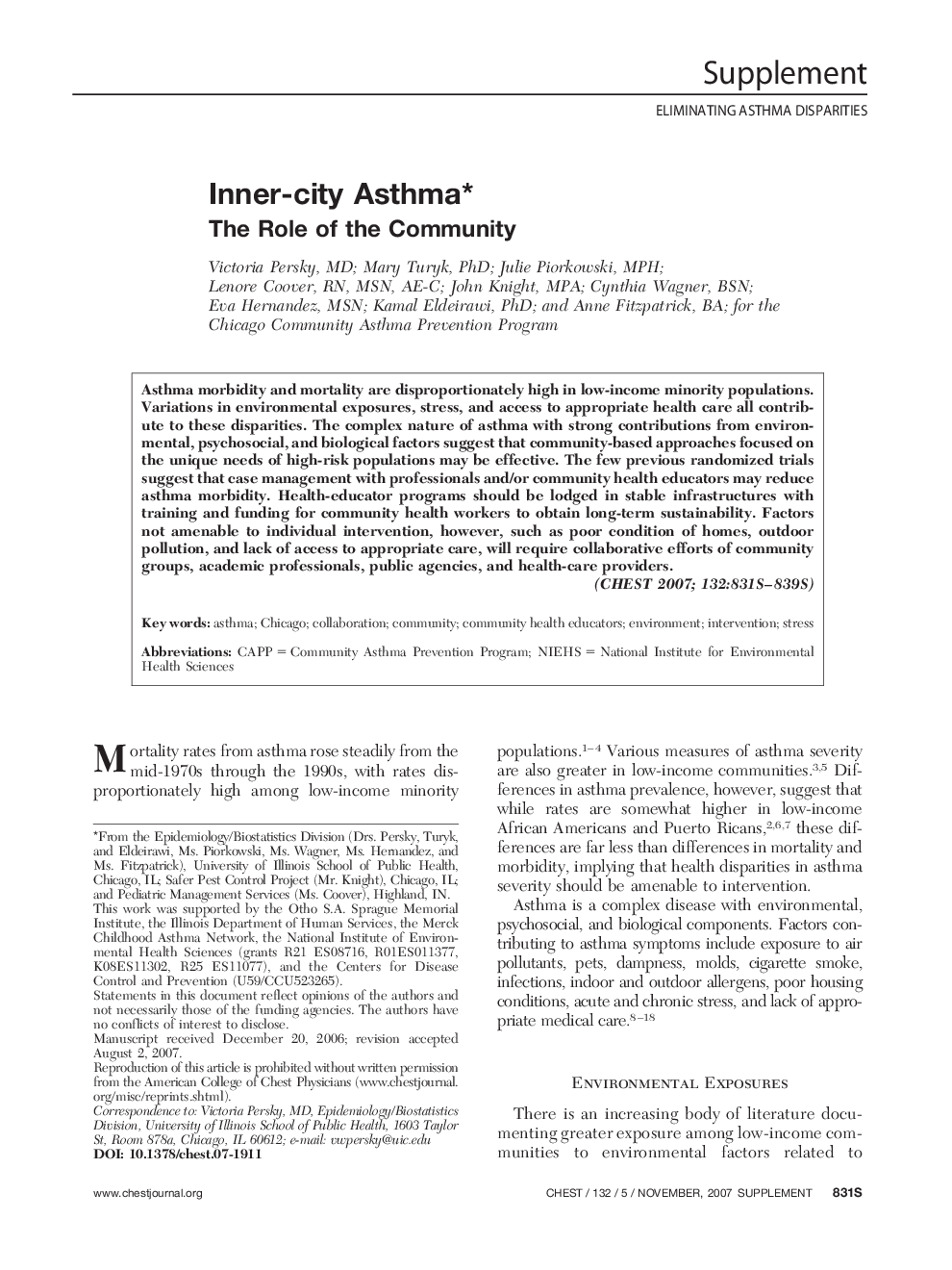| Article ID | Journal | Published Year | Pages | File Type |
|---|---|---|---|---|
| 2904400 | Chest | 2007 | 9 Pages |
Asthma morbidity and mortality are disproportionately high in low-income minority populations. Variations in environmental exposures, stress, and access to appropriate health care all contribute to these disparities. The complex nature of asthma with strong contributions from environmental, psychosocial, and biological factors suggest that community-based approaches focused on the unique needs of high-risk populations may be effective. The few previous randomized trials suggest that case management with professionals and/or community health educators may reduce asthma morbidity. Health-educator programs should be lodged in stable infrastructures with training and funding for community health workers to obtain long-term sustainability. Factors not amenable to individual intervention, however, such as poor condition of homes, outdoor pollution, and lack of access to appropriate care, will require collaborative efforts of community groups, academic professionals, public agencies, and health-care providers.
